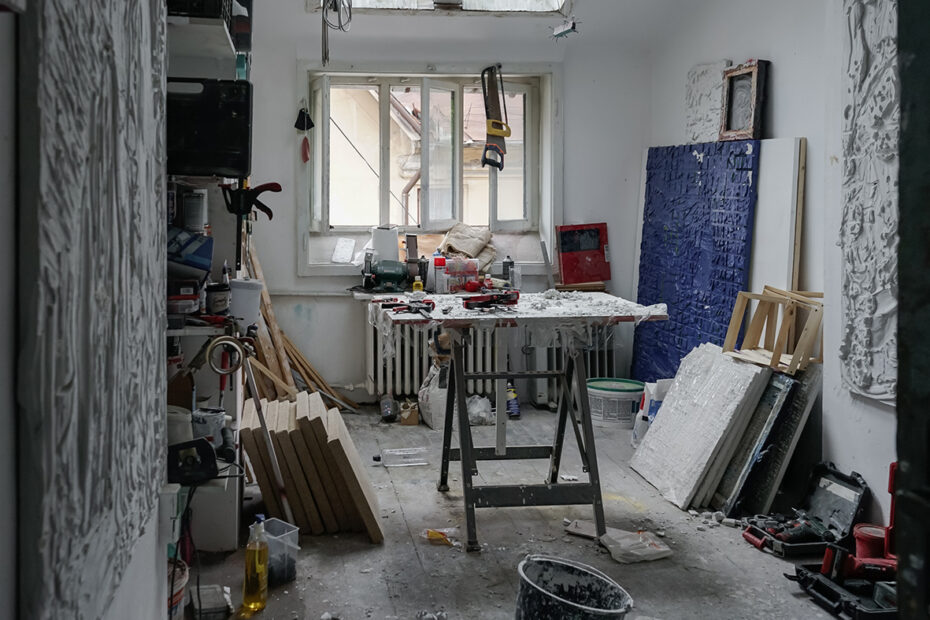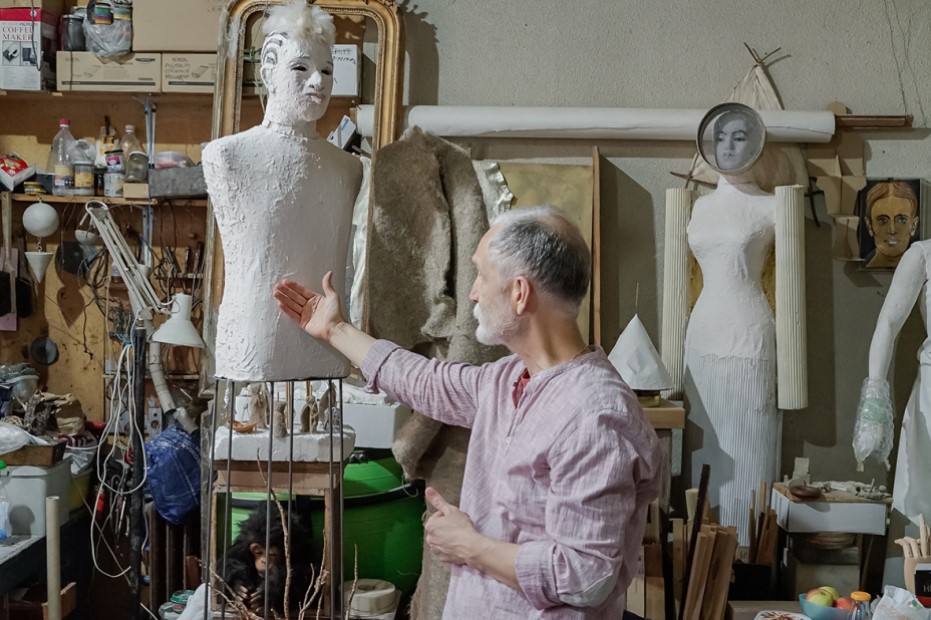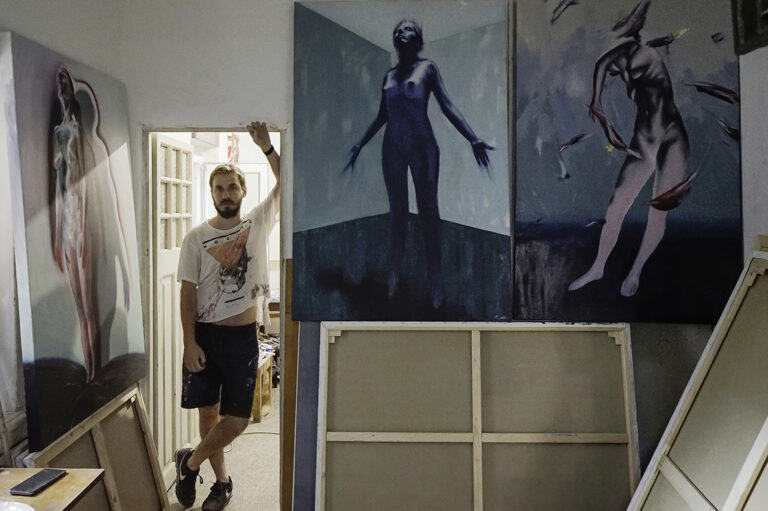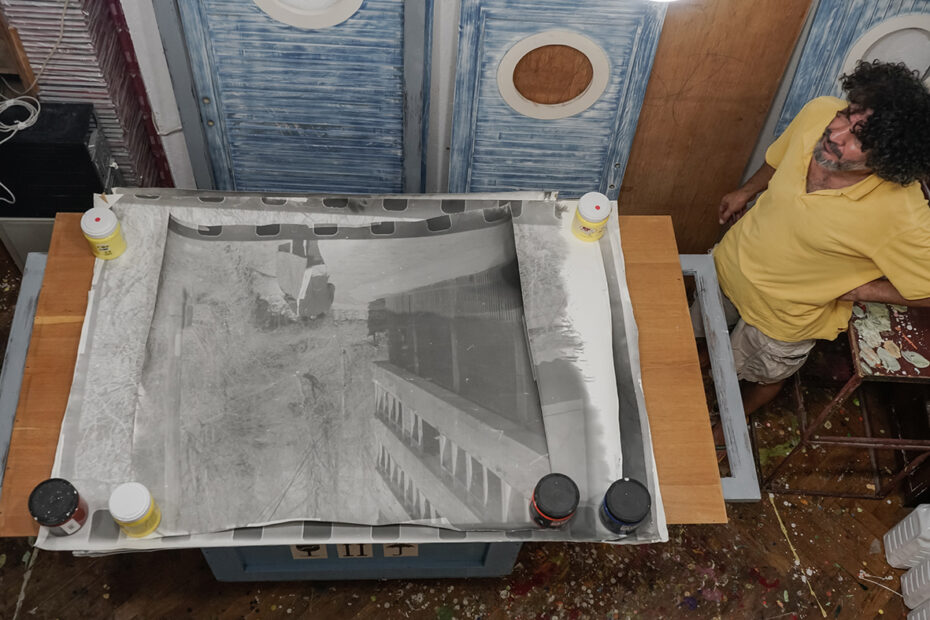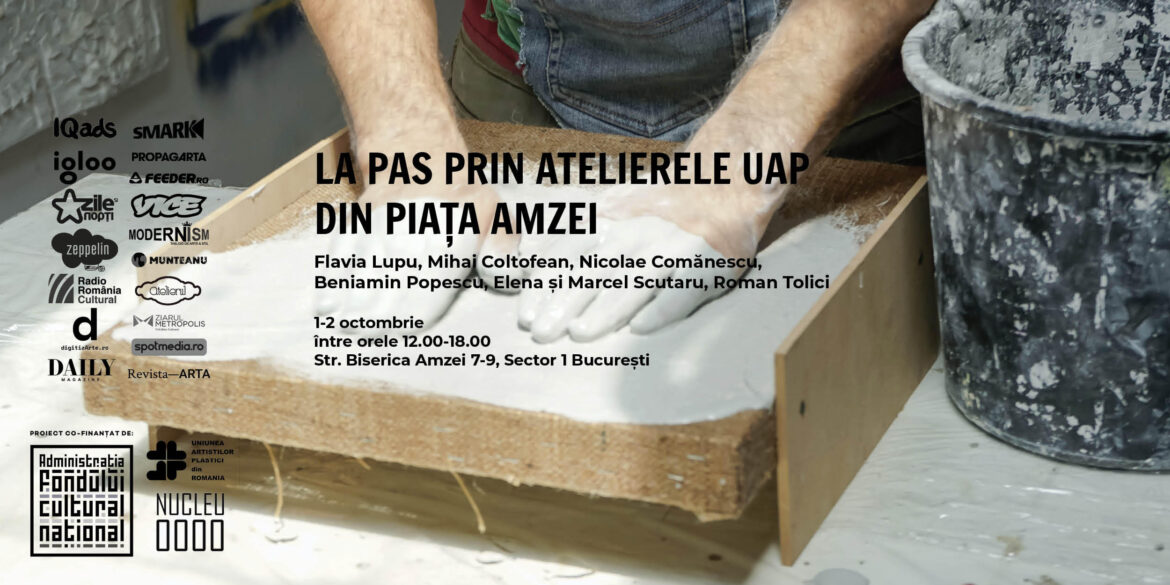This weekend (October 1-2) the studios of the artists Mihai Coltofean, Nicolae Comănescu, Flavia Lupu, Beniamin Popescu, Elena and Marcel Scutaru, and Roman Tolici can be visited during the cultural event “La pas prin atelierele UAP din Piața Amzei/ Walking through the UAP studios in Piata Amzei”.
“We designed a series of events to emphasize the meaning of the workshop in the life of an artist. It is a vital space for development. We started by documenting the workshops in the UAP buildings in Piata Amzei and Șelari, in Bucharest. Next year, we want to continue with those in the country. Therefore, we invite the public to a place usually closed, in the workshop, a multifunctional space where a creator is free to experience, destroy, build, and throw away, without value judgments. If he wants to, he can share these unrests, but it is not necessary. Some artists open the doors of workshops, but most remain solitary. Historically, it is rare that artists have created without a workshop, working in their own homes. For visual artists, a place of experimentation and research is essential for the design and realization of the work”, said Gabriela Mateescu, founder of the Nucleu 0000 NGO.
The studios are open between 12:00-18:00, Biserica Amzei street, no. 7- 9.
· Beniamin Popescu: Saturday and Sunday, 1-2 October, between 12.00-18.00
· Roman Tolici: Saturday, October 1, between 14.00-17.00
· Nicolae Comănescu: Sunday, October 2, between: 14.00-18.00
· Elena and Marcel Scutaru: Sunday, October 2, between 13.00-15.00
· Flavia Lupu: Sunday, October 2, between 15.00-17.00
· Mihai Coltofean: Sunday, October 2, between 15.00-18.00
The event is organized by the Nucleu 0000 which aims through this approach to promote the creative spaces in the center of Bucharest among the general public, and, at the same time, to draw attention to the problem of the lack of creative workshops in Romania.
Beniamin Popescu is a visual artist and graduate of the Painting Department of the University of Arts in Bucharest. The recent works of Benjamin Popescu evoke the urban ruins that are revealed in his object paintings, bringing into focus the role that rapid progress plays in cities and their architectural layers. A ruin is not only the object itself but its complete history from construction to deconstruction. Benjamin’s interest in them also stems from his investigations into the materials often used on construction sites, with which he has always worked, and subsequently begins to incorporate their remains, components, and substances into his abstract painting. Maps and urban architecture are presented not only in his newest works on canvas but also in his sculptural objects that resemble structures of metal and reinforced concrete constructions.
Roman Tolici is associated with photographic realism infused with poetry and a surrealist sense of everyday existence. His paintings seem to be details of a monumental story related to man’s general questions and anxieties. This narrative force transforms recurring topics into endless chapters, and the reflections of everyday life into projections about time, memory, and traces captured by the artist’s tender perception.
Nicolae Comănescu. “Considered one of the most prolific contemporary artists in Romania, Nicolae Comănescu (b. November 14, 1968) asserted himself in the post-Decembrist artistic climate together with the Rostopasca group (Dumitru Gorzo, Alina Penţac, Angela Bontas, Alina Buga, Florin Tudor, and Mona Vatamanu), and later, individually, through a plastic program marked by material and technical diversity. Comănescu graduated from the Academy of Arts in Bucharest in 1998, in the class of Professor Ion Sălişteanu. His work is endemic to Bucharest, integrating the very matter of the city in the plan of paintings. His works reproduce the cadence of urban agglomerations, iconoclastic political forces, and relentless computer implosion.” (Mihai Zgondoiu)
Flavia Lupu lives and works in Bucharest, and is a visual artist, and a teacher at the National University of Arts in Bucharest. Doctor of Arts, with a thesis on the human body in contemporary art, analyzed through the prism of the relationship between image and politics, he works in various environments: painting, photography, installation, and performance. She participated in group exhibitions, workshops, and conferences in the country and Europe (Austria, Belgium, Italy, Hungary), and realized several personal projects that had as topics socio-cultural belonging, gender stereotypes, the relationship between the public space and the private space, cultural identity and structural investigation of creativity.
Mihai Coltofean is a graduate of the Nicolae Tonitza High School of Fine Arts in Bucharest and the National Faculty of Arts in Bucharest at the Departments of Art Pedagogy and Painting. He is currently a member of the Union of Fine Artists in Romania, painting department. He divides his time between the workshop in Piața Amzei, where he paints, and at the “I.N. Socolescu” architecture high school where he teaches the study of forms in drawing. In his works, he does not want to illustrate a concept with a narrative or temporal thread, but rather the force of the image, his affective character, and the expression of human realities and psychological states of the individual.
Elena Scutaru and Marcel Scutaru are “two sculptor artists at the age of full maturity. For more than a quarter of a century, they share a common artistic destiny with each of its paths clearly defined. Their speeches animate and potentiate each other. What unites them? The adherence to the figurative and the motifs from the repertoire of late antiquity, to which I find insolent solutions…” (Mădălina Mirea) Elena Scutaru shares the workshop with her husband, the sculptor Marcel Scutaru.
Project organized by the Nucleu 0000, in partnership with the Union of Fine Artists in Romania. Co-financed by AFCN
